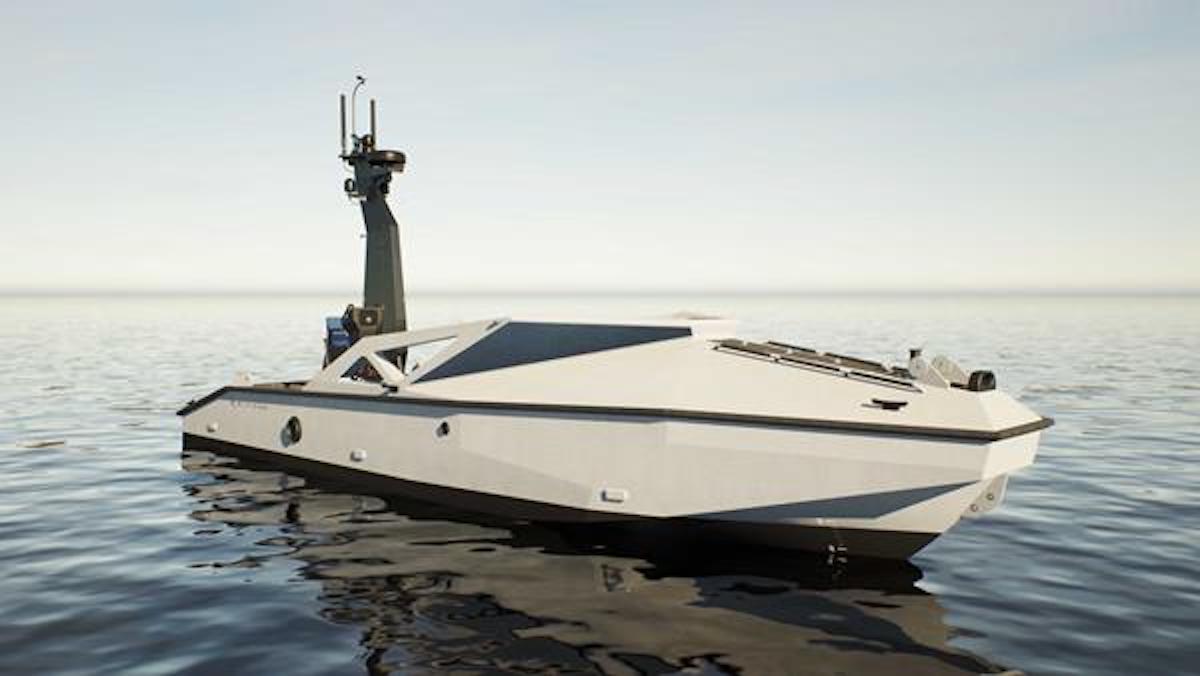

The Marine Corps is on the hunt for a brand new robot surface warship that can travel long distances and fire off loitering munitions at various targets.
Louisiana-based shipbuilder Metal Shark announced on Monday that Marine Corps Systems Command had selected the company to develop the so-called Long Range Unmanned Surface Vessel (LRUSV) for the service.
The LRUSV is “an unmanned platform capable of traveling autonomously for long distances and launching loitering munitions to address sea and land targets,” according to a December request for information regarding the vessel’s autonomy systems.
Loitering munitions, also known as kamikaze drones, are best described as bombs that are designed to loiter above a set area, search for targets, and attack once a target is formally identified.
According to Inside Defense, the actual LRUSV will end up looking like an 11-meter autonomous boat that uses the “collaborative swarming behaviors” developed under a past Strategic Capabilities Office effort called “Sea Mob.”
The minimum system capabilities required of the LRUSV involve the ability to “collaboratively interact with other vessels as a cluster,” namely as a swarm; to integrate with existing U.S. military fire control applications; and to provide launch capability for other small unmanned surface vessels, according to the listing.
“This tiered, scalable weapons system will provide the ability to accurately track and destroy targets at range throughout the battlespace,” according to Metal Shark, which easily has the best name for a business that’s been commissioned to build robot warships.
“While fully autonomous, the vessels may be optionally manned and they will carry multiple payloads, which they will be capable of autonomously launching and retrieving.”
The Marine Corps has previously considered arming the LRUSV with various weapons systems, deploying the vessels as logistics drones, and putting them to work during war games, Defense News reports.
Inside Defense reports that service officials had in the past characterized the vessel as a particularly important asset in the Indo-Pacific to help with deterring Chinese aggression in the region.
“Long Range Unmanned Surface Vessels for us [are] vitally important because they’re lethal,” as Marine Corps Combat Development Command chief Lt. Gen. Eric Smith put it in late 2019. “They’re not just connectors, they’re sniffers. They’re out there telling me what’s going on. They’re passing that information back to me.”
According to Navy Recognition, Metal Shark had previously been selected to furnish both the Navy and Coast Guard with robotic test vessels are part of the service’s experiment with autonomous platforms, Navy Recognition reports.
Metal Shark has enlisted autonomous technology developer Spatial Integrated Systems (recently acquired by Huntington Ingalls Industries) to develop the LRUSV’s autonomy systems with an eye towards multi-vessel swarming capabilities, the company said.
“The LRUSV program represents a significant milestone for autonomous technology, for the defense world, and for the entire shipbuilding industry,” Metal Shark CEO Chris Allard said in a statement.
“We are thrilled to be integrating advanced autonomy and Command and Control capability into these highly specialized surface vessels to provide the Marine Corps with a next-generation system.
Insider Defense reported in September that the Marine Corps hopes to field its LRUSV some time between fiscal years 2025 and 2027.
Related: The Marine Corps is on the hunt for a kamikaze drone swarm to back up grunts on the battlefield
